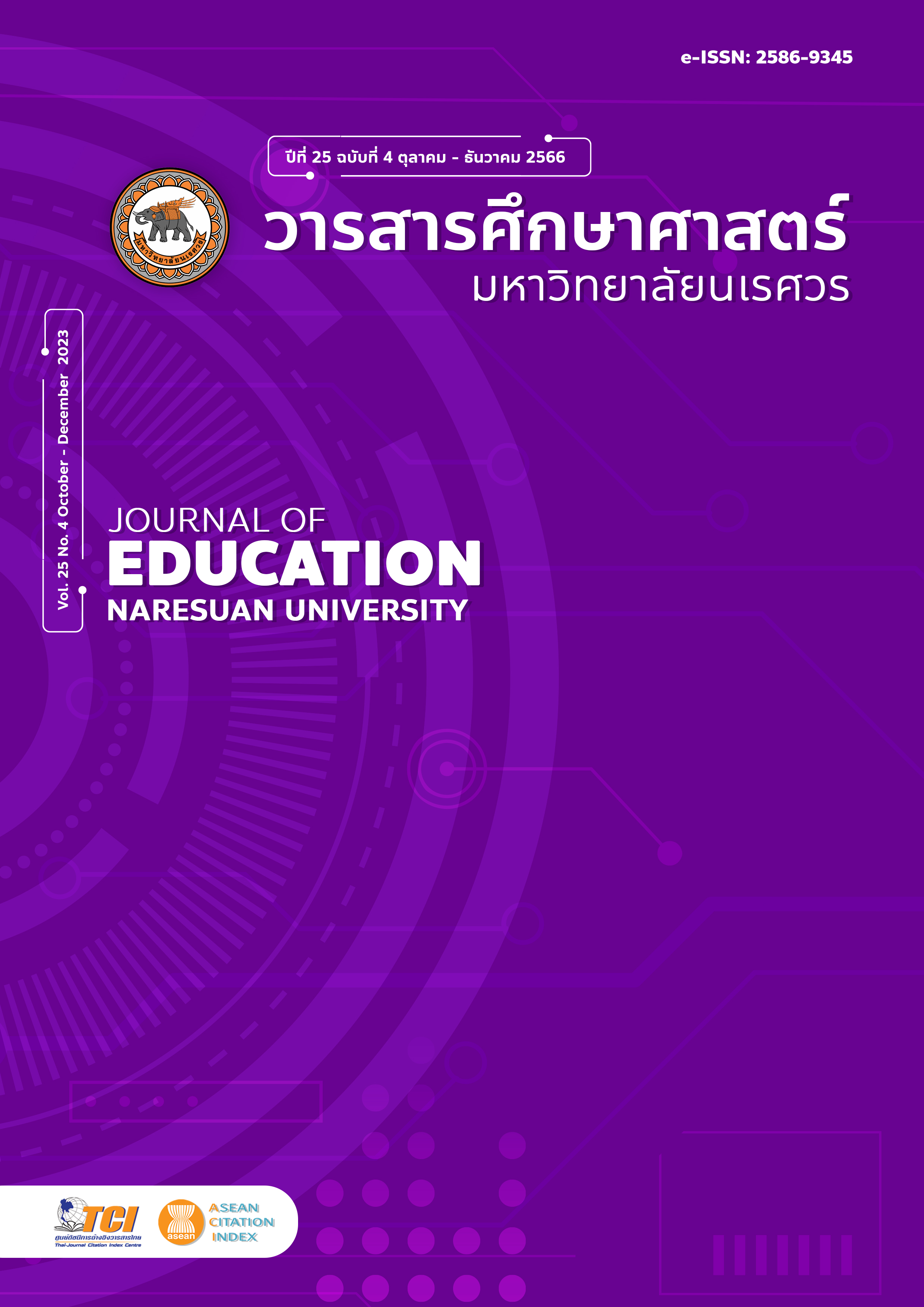LEARNING MANAGEMENT BASED ON STEAM EDUCATION USING DESIGN THINKING PROCESS FOR DEVELOPING 2ND GRADE STUDENTS’ CREATIVITY IN THE TOPIC OF MATERIALS AND THEIR UTILIZATION
Main Article Content
Abstract
The objective of this study is to investigate learning systems based on STEAM education. The Design Thinking process allows second grade students to explore their creativity through exploring materials and how to use them. After finishing the instruction period, the students were assessed. The target group was 40 2nd grade students. This study was conducted by using action research process with three cycles. The research tools used the study were the developed lesson plans based on STEAM education with the use of design thinking process, learning management reflection, creativity assessment, and evaluation of creativity. For data analysis, content analysis technique was employed and the credibility of analyzed data was checked by method triangulation. The studies found that the proper ways of learning management based on STEAM education using design thinking process developing students’ creativity should have following features: 1) students to participate problem solving situations and ask for clarification; 2) teacher and students should discuss to express their opinions to the main issues for determining the creation goals; 3) students integrate their knowledge into decision making work process; 4) students should design and then create their work as designed; 5) students test their work accordingly following to the given conditions and then improve for presentation as assigned. For examining the results of creativity improvement, it was revealed that the students have an increasingly higher creativity after using learning management based on STEAM education using design thinking process.
Article Details

This work is licensed under a Creative Commons Attribution-NonCommercial-NoDerivatives 4.0 International License.
The owner of the article does not copy or violate any of its copyright. If any copyright infringement occurs or prosecution, in any case, the Editorial Board is not involved in all the rights to the owner of the article to be performed.
References
Aupapai, N. (2012). Educational psychology (2nd ed.). Bangkok: Chulalongkorn University Printing. [in Thai]
Burnette. (2005). Idesign-seven ways of design thinking: A teaching resource. Retrieved March 10, 2019, from http://www.idesignthinking.com
Intavimolsri, S. (2017). Effects of using STEAM education approach in biology on scientific creativity and learning achievement of tenth grade students (Master thesis). Bangkok: Chulalongkorn University. [in Thai]
Kijkuakul, S. (2014). Learning management directions 21st century teachers. Phetchabun: Chunladit Printing. [in Thai]
Kraiwan, H. (2016). Learning experience provision of the STEAM education on preschool children’s creative problem-solving ability (Master thesis). Bangkok: Kasetsart University. [in Thai]
Ministry of Education. (2017). Indicators and core learning content Science and Technology Learning Subject Group (Revised Edition 2017) According to the core curriculum of basic education in 2008. Bangkok: Agricultural Cooperative Community of Thailand. [in Thai]
National Economic and Social Development Office. (2016). National Economic and Social Development (suppl. 12), 2017-2021. Bangkok: association of teacher. [in Thai]
Panmanee, A. (2014). Trained to think creatively. Bangkok: Chulalongkorn University Printing. [in Thai]
Park, N. (2014). The development of STEAM career education program using virtual reality technology. Life Science Journal, 11(7), 676-679.
Piaget, J. (1983). Piaget’s theory. In P. H. Mussen, & W. Kessen (Eds.), Handbook of Child Psychology: Vol. I History, Theory, and Methods (pp. 41-102). New York: John Wiley.
Pudphong, S. (2010). Enhance creativity through thinking skills. Journal of Education for Teachers and Parents, 7(2), 10-12. [in Thai]
Riley, S. (2014). How to STEAM: The STEAM process. Retrieved April 16, 2019, from http://educationcloset.com/steam/how-to-steam/
Santipaiboon, J. (2018). Learner’s development activities by STEAM and productivity based learning to enhance the process skills and creative abilities in third grade students (Master of Education). Bangkok: Silpakorn University. [in Thai]
Sintapanon, S. (2009). Learning management of modern teachers to develop century learners' skills 21. Bangkok: Chulalongkorn University Printing. [in Thai]
Sinlarat, P., Methakhunnawut, P., & Sriburi, S. (2007). Development research project a model for creating and developing teachers to support the learning process in intellectual development based on Thai concepts. Bangkok: Chulalongkorn University Printing. [in Thai]
The Stanford d. School Bootcamp Bootleg (HPI). (2009). D. school bootcamp bootleg Institute of design at Standford. Retrieved April 18, 2019, from https://dschool.stanford.edu/wp-content/uploads/2009/12/BootcampBootleg20091.pdf
Vygotsky, L. S. (1978). Mind in society: The development of higher psychological process. Cambridge MA: Harvard University Press.
Yang, K., Lin, S., Hong, Z., & Lin, H. (2016). Exploring the assessment of and relationship between elementary students’ scientific creativity and science Inquiry. Creativity Research Journal, 28(1), 16-23.
Yakman, G. (2008). STEAM education: An overview of creating a model of integrative education. Pupils' Attitudes Towards Technology (PATT-19) Conference: Research on Technology, Innovation, Design & Engineering Teaching. Salt Lake City, Utah, USA.


